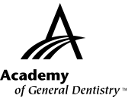|
Exercise No. 355
Subject Code: 165
Digital Radiology
The 15 questions for this exercise are based on the article, “Digital intraoral radiographic quality assurance and control in private practice,” on pages 22-29. This exercise was developed by Steven E. Holbrook, DMD, MAGD, in association with the General Dentistry Self-Instruction committee.
|
Reading the article and successfully completing this exercise will enable you to:
- identify components of a quality control (QC) and quality assurance (QA) program for digital radiography,
- understand what is necessary to improve the diagnostic quality of digital radiographs, and
- recognize how an effective QC/QA program can reduce patients’ radiation exposures.
|

